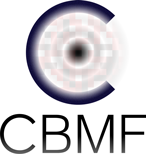For post-processing (such as deskewing and deconvolving) use the program lls. To get the full help menu on this program, type the following at a cbmf-latwork command prompt:
lls -h
For instance, for basic deskewing of a dataset, type the following at a cbmf-latwork command prompt:
lls /path/to/LLSfolder
…where /path/to/LLSfolder is replaced with the absolute or relative path to the experiment folder that you want to process (the folder that has the Settings.txt file in it). Don’t forget, you can use . to represent the current working directory, so you can process the current working directory by typing lls .
If the folder specified has already been processed, you will need to add the --reprocess or -r flag to the command:
lls -r /path/to/LLSfolder
By default, the program will generate a Deskewed folder that contains the deskewed data and a GPUdecon folder with a single file that contains the combined maximum-intensity projections for all time points and all channels that can be easily opened in ImageJ/Fiji to view the dataset. To keep the complete deconvolved Z-stacks, add the -i flag to the command and specify the number of desired iterations (5-10 is reasonable):
lls -i 8 /path/to/LLSfolder
By default, the images will be “auto-cropped” to exclude regions that do not contain sample (so as to reduce file size), to prevent auto-cropping, add -w 0 to the command:
lls -w 0 /path/to/LLSfolder
For complete details and source code, see the LLSpy GitHub repository.
